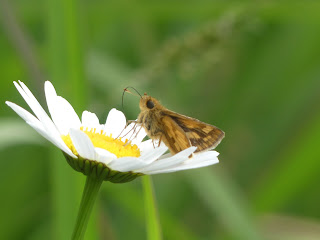Eastern Phoebe
Here's another picture of an Eastern Phoebe, this one from last autumn. They are in the tyrant flycatcher family, so it won't surprise you that small invertebrates are on their menu. Ornithologists generally consider this to be the largest family of birds, though it's possible that the family might get split into smaller families as we learn more.
Here in New Jersey we're basically at the southern edge of the Eastern Phoebe's breeding range; some of them breed well into Canada. And we theoretically don't see them in the winter, probably because of the challenges of finding invertebrates to eat in winter.
The Eastern Phoebe gets its name from its "fee-bee" call, but not all fee-bees are from phoebes; the Black-capped Chickadee makes a similar sound, though with phoebes the call is shorter than the chickadee one.
These birds are generally loners, coming together to breed but then generally parting ways. Though they'll certainly catch flies, why are these generally peaceful birds in a family called tyrant flycatchers? Apparently this is because of a relative of theirs, the Eastern Kingbird. The Eastern Kingbird is a small bird known for attacking much larger birds, presumably to drive predators and competitors out of their area, and earning the scientific name of Tyrannus tyrannus (basically "tyrant of tyrants"). The family name comes from the Eastern Phoebe's combative/aggressive cousin.
 |
| October 15, 2021 at Duke Island Park Photo 168430108, (c) jpviolette, some rights reserved (CC BY-NC) |



Comments
Post a Comment